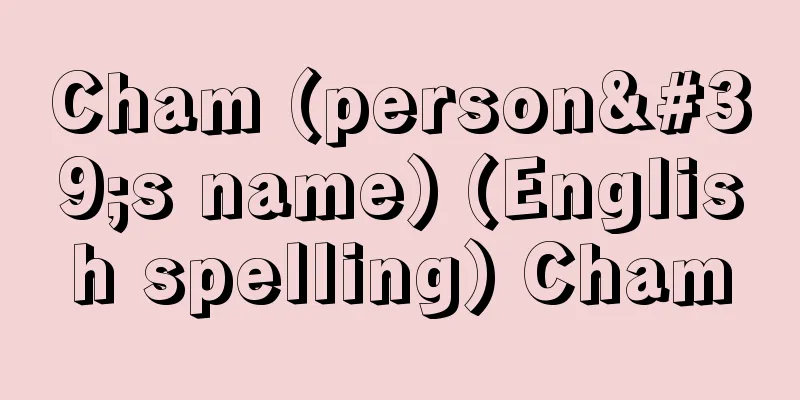Castle - Shiro

|
A type of architecture built as a military defense facility. Castles surrounded the residences of feudal lords, and city castles surrounded the associated towns and settlements, as well as various other defensive forts. In the West, they developed throughout Europe, particularly from the 10th century until the end of the Middle Ages. They were built in strategic locations, with battlements and crenellations surrounding the surrounding walls, and turrets at key points. Access to the outside of the castle was only possible through the castle gates, and if there was an outer moat, a drawbridge was built in front of the gates. Within the castle walls were the main house for the lord's residence, living quarters for soldiers, watchtowers, etc. After the 15th century, with the development of weapons, the military significance of fortresses was lost, and they transitioned into castles for residence. In Japan, from the Nara to the Heian period, capital cities (Heijo-kyo and Heian-kyo) were constructed following the model of Chang'an and Luoyang in the Tang Dynasty, and in the Tohoku region, fortifications such as Nutari-no-saku (castle fences) were built as fortifications, and Taga Castle and Isawa Castle were built as bases for managing the Emishi and as the government offices of Mutsu Province. Castles developed from the Middle Ages onwards, but unlike in the West, they did not surround towns below them, but were defensive facilities only for the lord's base. The main castle with the castle tower was the centre of the castle, where the lord's residence was established, and the territory was laid out (a defensive formation that makes use of the terrain) around the main castle, and the kuruwa (brick walls) below the Ninomaru and Sannomaru were placed, with corner towers at key points. The towers and walls had gun slits and arrow slits equivalent to gun loops, aiming for the passage to the main citadel. After the Muromachi period and the beginning of the Warring States period, castles developed significantly, with mountain castles that took advantage of the natural terrain and flat mountain castles built on hills overlooking the plains of the domain. After the Onin and Bunmei Wars, castles came to be seen not as strategic bases, but as political centers for governing the domain and symbols of the lord's authority, flat castles such as Nagoya Castle and Nijo Castle were built more frequently, and beautiful architecture unique to Japan was born. Many castle buildings were destroyed during the Meiji Restoration and World War II, but Himeji Castle, with its 82 buildings including the castle tower, is the only remaining structure where the entirety of early modern castle architecture can be seen. →Castle Town→Related topicsIji Castle | Mountain Castle | Mansion | Main Citadel | Matsumoto Castle | Matsuyama Castle | Matsuyama Castle | Maruoka Castle | Monou Castle Source : Heibonsha Encyclopedia About MyPedia Information |
|
軍事上の防御施設として建設された建築。領主の居館を囲む城郭,それに付属する都市や集落を囲む市城があり,他に防御のための各種の砦(とりで)が設けられた。西洋では特に10世紀以降中世末までヨーロッパ全土に発達した。要害の地に設けられ,周囲の城壁には銃眼のある胸壁をめぐらし,要所に小塔を立てる。城外との交通は城門によってのみ行い,外濠のある場合にははね橋が城門の前に設けられた。城壁内には領主の住居のための主屋,兵の居住部分,望楼等がある。15世紀以後は武器の発達とともに城塞(じょうさい)としての軍事的意義を失い,居住のための城館に移行した。 日本では奈良〜平安時代に,唐の長安や洛陽を範として都城(平城京・平安京)が造営され,東北地方には砦として渟足柵(ぬたりのさく)などの柵(城柵)が設けられ,蝦夷(えみし)経営の基地および陸奥国の政庁として多賀城・胆沢(いさわ)城などが築かれた。中世以降に城が発達したが,西洋の場合とは異なり,城下の町を囲むことはなく領主の本拠だけの防御施設となっている。天守をもつ本丸が城の中心で,城主の居館が設けられ,本丸を取り囲むように縄張(なわばり)(地形を活用して防備のための構えを作ること)が行われ,二の丸,三の丸以下の曲輪(くるわ)を配置,要所に角櫓(すみやぐら)を置いた。櫓や塀(へい)には銃眼に相当する鉄砲狭間(ざま)や矢狭間があけられ,本丸への通路を狙う。室町時代以降戦国の世になってから著しく発達し,天然の地形を利用した山城(やまじろ)や,領国の平野を見渡せる丘の上に立つ平(ひら)山城が作られた。応仁・文明の乱以後は戦略上の拠点としてよりも,領国を治める政治の中心として,また領主の権威の象徴としての性格が強くなるにつれて,名古屋城や二条城等のような平城が多くなり,日本独特の美しい建築が生まれた。城郭建築の多くは明治維新と第2次大戦で破壊されたが,姫路城は天守以下82棟(むね)をもち,近世城郭建築の全貌(ぜんぼう)を見ることのできる唯一の遺構である。→城下町 →関連項目伊治城|山城|館|本丸|松本城|松山城|松山城|丸岡城|桃生城 出典 株式会社平凡社百科事典マイペディアについて 情報 |
<<: Couscous (English spelling) Phalanger; cuscus
Recommend
Normative economics
…Also called normative economics, its task is to ...
Apocrine secretion
…A type of gland that performs secretory function...
Instrument law - Gakkiho
...It refers to the method of realizing the compo...
Valentinus (English spelling) Basilius Valentinus
A semi-legendary monk who is said to have been act...
Shunyokai - Shunyokai
An art group for Western painting and printmaking...
Zinc - aen (English spelling) zinc
It belongs to group 12 of the periodic table and ...
Kankosai - Kankosai
〘Noun〙 A festival in which the spirit of a god is ...
Zheng; Chêng
One of the princely states of the Zhou dynasty in ...
Anga (History) - Anga
…The term mahājanapada translates to “great count...
Hasan al-Banna (English spelling)
1906‐49 Murshid was the first leader of the Muslim...
Hisao Arakida
Year of death: Bunka 1.8.14 (1804.9.17) Year of bi...
Beolco, A. (English spelling) BeolcoA
...P. Aretino, who had a worldly spirit and was n...
Ikawazu style
…In addition, there are eight human bones with fo...
Randen
A county in central Shaanxi Province, China. It i...
Katsura Nanten - Katsura Nanten
...This is a performance in which, at the request...









